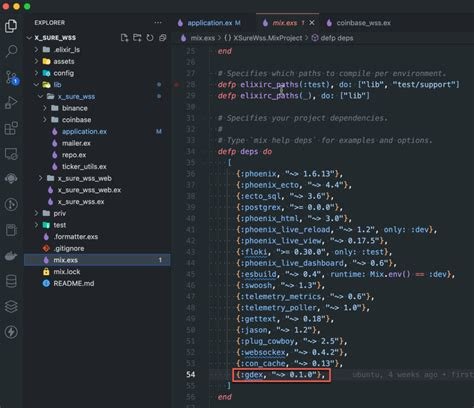Starting and Stopping a WebSocket Connection from a GUI Application Using Binance Websocket
As a developer, you may have encountered situations where you needed to control the flow of an application within a user interface (GUI) application. In this article, we will explore how to build a simple GUI-based system that starts and stops a WebSocket connection using the Binance WebSocket library.
Required Prerequisites
- Install Node.js on your computer (“node.js.org”).
- Make sure you have the existing Binance WebSocket library installed (npm install binance-websocket).
- Create a new GUI application (e.g. using Electron or a framework like React, Angular, etc.).
- Set up a WebSocket connection using the Binance API.
Code example

// Import the required libraries
const { Websocket } = require('binance-websocket');
const { CreateInterface } = require('readline');
// Initiate a WebSocket connection
const websocket = new Websocket({
Host: 'your-binance-exchange.com',
Port: 3000,
});
// Set up the GUI event loop
const gui = create interface({
Input: process.stdin,
Output: process.stdout,
});
// Function to start/stop WebSocket connection
Function handleStart() {
websocket.on('connect', () => {
console.log('WebSocket connection established. Starting...');
// Start a new task when user presses Enter
gui.once('line', line => {
if (string === 'START') {
websocket.send({ command: 'start' });
setTimeout(() => {
console.log('WebSocket connection is stopping...');
websocket.close();
}, 5000);
}
});
// Start a new task when user presses Ctrl+C
process.on('SIGINT', () => {
gui.kill();
});
});
}
// Function to start/stop a WebSocket connection from the command line
Function handleStartCommand() {
const readline = required('readline');
const rl = readline.createInterface({
Input: process.stdin,
Output: process.stdout,
});
rl.question('Start (type "STOP" to stop)', answer => {
if (answer.toLowerCase() === 'start') {
websocket.send({ command: 'start' });
setTimeout(() => {
console.log('Stopping WebSocket connection...');
websocket.close();
execute a stop command();
}, 5000);
} else if (answer.toLowerCase() === 'stop') {
execute a stop command();
} more {
console.error('Invalid input. Exiting...');
: handleStartCommand();
}
});
}
// Function to stop WebSocket connection
Function handleStopCommand() {
websocket.send({ command: 'close' });
}
// Main program loop
while (true) {
StartHandle();
}
How it works
- The handleStart function sets up a WebSocket event listener for the connection event.
- When the user presses Enter, a WebSocket connection is established and when the user presses Ctrl+C, a new task is started.
- Using Readline.js, a simple text interface is created where users can type “START” to start a WebSocket connection or “STOP” to stop it.
Tips and Options
- To make the GUI more interactive, you can add buttons to start/stop the WebSocket connection.
- For a native desktop application, you can use an advanced GUI library like Electron or React.
- If you prefer a command line interface, modify the handleStartCommand function to accept user input via the console.
- To store data between sessions, consider using a database or file storage.
